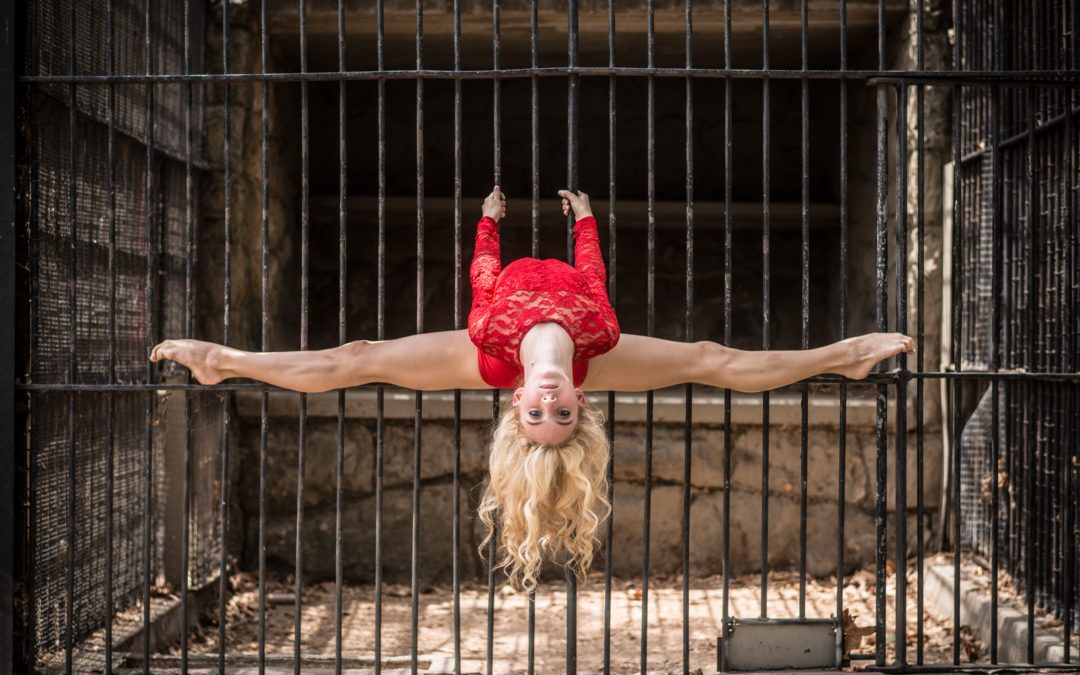As was mentioned in the previous blogs and will be mentioned in the blog after this one, there are four different essentials of fitness. They are: strength, cardio, flexibility and balance. A well rounded routine is going to address all four aspects. All of the aspects of fitness complement and improve one another, which is what makes their combined power so vital to your health! Check out our previous article, Your Own Monthly Fitness Challenge to learn more.
We’ve already talked about strength and cardio in the previous blogs, so today we’re going to focus on the importance of flexibility. If I asked you to name two exercises you could do to improve your overall health, your mind probably goes straight to activities like jogging or lifting weights. The ability to touch your toes without bending your knees likely isn’t the first thing you think about. Just like the balance aspect of fitness (which we will talk about next time!), flexibility is one of the less talked-about categories. So what is flexibility and what makes it so important to your health?
What is flexibility?
Flexibility exercises stretch and lengthen your muscles. Incorporating stretching, yoga, or tai chi into your regimen are good ways to improve this aspect of fitness.
Some people are naturally flexible due to genetics. Gender, age, and body shape can also offer an advantage when it comes to physical flexibility. But just because you aren’t naturally flexible doesn’t mean you can’t become for more flexible later on! There are contortionists out there who weren’t born naturally flexible and can now turn themselves into human-pretzels! You just need to practice.
So, what are the benefits of flexibility exercises?
- Injury prevention
- This is the case for all the aspects of fitness, really.
- Decreased risk of injury will allow you to perform everyday activities with more ease.
- Improved balance
- It’s the aspect we’re going to address next time!
- Flexibility improves your endurance. This not only facilitates your ability to balance, though. Improved endurance will also come to your aid when performing any type of exercise, such as aerobics or strength training.
- Improved posture
- Reduced muscular soreness
- Improved blood circulation
- Enhanced flexibility increases the flow of blood to your muscles
- Improved range of motion
- Flexibility exercises will make your joints more movable and your muscles more pliable.
- Ask your massage therapist about proprioceptive neuromuscular facilitation (PNF). It’s assisted stretching that improves your range of motion right in front of your eyes!
Some things to consider before stretching
Even though being flexible decreases your risk of injury, you can actually hurt yourself if you don’t stretch properly. Proper care is easier than recovering compensation for personal injury claims. For example, if you do an intense hamstring stretch when you already have tight hamstrings, you can cause the muscle tension to worsen. Think about pulling a rope with a knot in the middle of it — pulling the rope isn’t going to loosen the knot! Here are some tips for what to do pre-stretching:
- Warm up the muscles!
- Do some joint rotations before your stretches.
- Tai chi is a low-impact activity that assists with joint mobility.
- Literally warm up the muscles!
- Use a heat pack and apply it to your tight muscles before you stretch. The warmth will help to ease the tense muscles.
- Stretch sport-specific muscles
- Address the muscles that are utilized in the workout you are preparing for.
- Rest in between workouts
- Get a massage!
- At the end of a massage, your therapist might send you home with a list of stretches for you to perform at home. It’s best to do those stretches as soon as you can post-massage. Your muscles will be loosened up by that point and your risk of injury will have decreased.
Now, (assuming you’ve properly warmed up), go do some flexibility exercises! Your body will be very happy later! And if you have any questions about what sorts of flexibility exercises will be best for you, schedule a consultation with Dr. Moyer!
The final Essentials of Fitness article, which is going to address the other less talked-about aspect of fitness, will be posted next week!
Written by: Katrina Jenkins
Photo by David Hofmann on Unsplash

